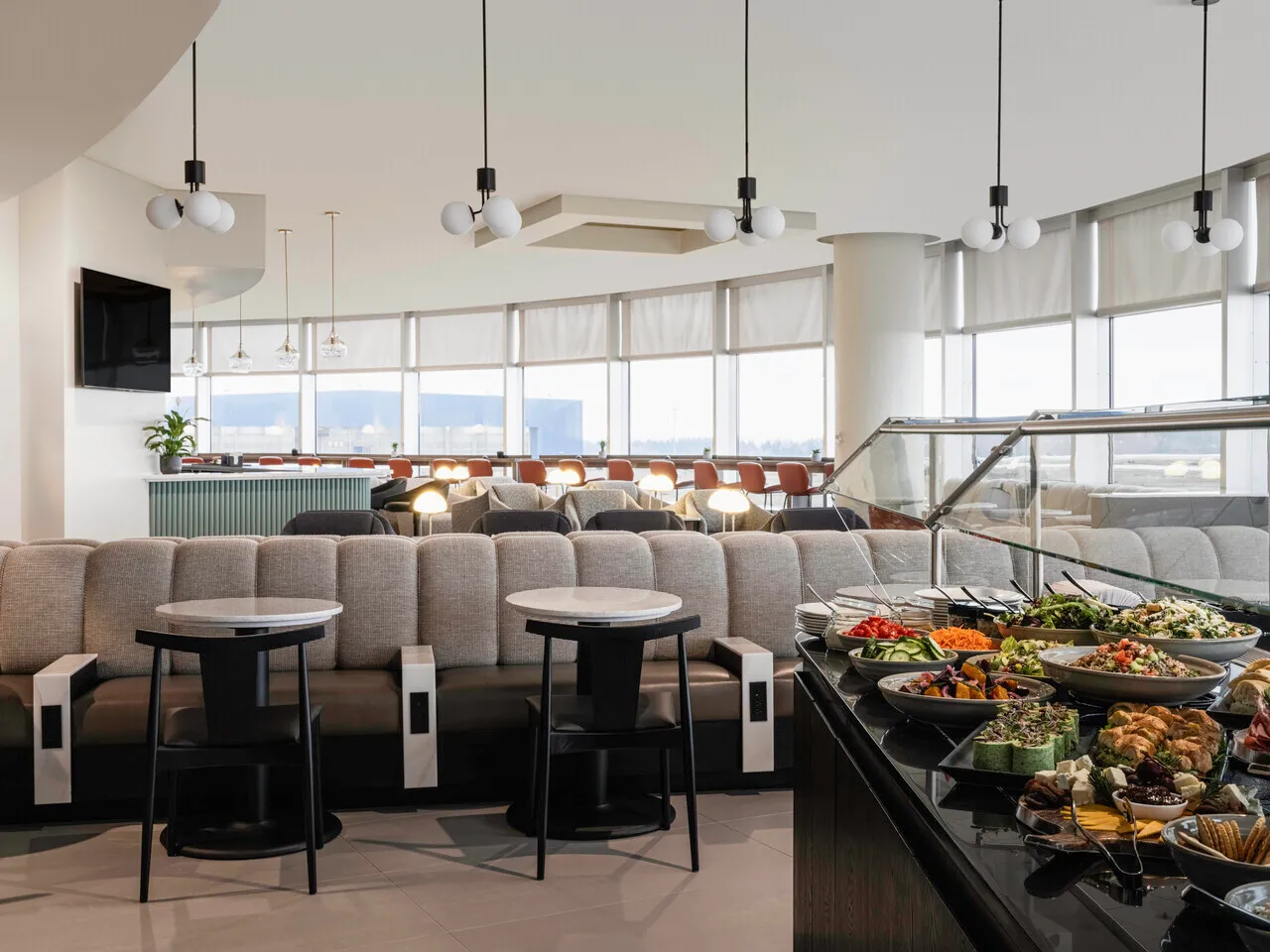Every One of Hilton's 13 Hotel Brands, Explained

Skift Take
When Hilton Worldwide CEO Christopher Nassetta recently threw some subtle shade at Marriott International, we couldn't help but wonder: Are each of Hilton's brands really so different from one another? Should some brands stay or go?
Here's what Nassetta said, regarding Hilton's brands:
"We are very focused on having pure-bred brands that are leaders in their individual segments, that have clearly defined swim lanes, that have premium market share and, as a consequence, help us drive industry leading organic net unit growth. That's our strategy. Others have taken different paths … "
And here's what Marriott's Global Brand Officer, Tina Edmundson, told us last month, a little over two weeks after Marriott inherited 11 of Starwood's brands: "… In any industry, when you have 30 brands, you're bound to have brands that occupy the same swim lane, if you will. We are doing work as we speak to solve some of those riddles."
See what Nassetta did there? We certainly did.
Does Nassetta have a point? Is it better to have pure-bred brands that don't swim in the same lanes? Most hospitality branding experts seem to agree with him. And arguably, so does Marriott, since Edmundson and her team are currently figuring out just how they want to position all those brands.
"I think, obviously, the main purpose of a brand is that it's all about differentiation," Gray Shealy, executive director of the Master's of Hospitality Management Program at Georgetown University, told Skift about the power of branding in hospitality. "How would I as a customer know whom to trust and which brand — and this is new to brand psychology — which brand to relate to? Which brand represents me as a customer in the best possible way? When I announce on social media I'm checking into X brand, it says a lot about me. The psychology behind this is quite deep these days."
Bjorn Hanson, clinical professor at the NYU Tisch Center for Hospitality and Tourism, said that for any hotel company with multiple brands, the key to successful branding is knowing what's in demand — and not so much about the brands themselves or their provenance.
"What every hotel organization that is already multi-brand is doing is to try to find white space — service levels or price points that are not being served," Hanson explained. "There are price points and service levels that are really most demanded by consumers. For instance, right now it's select service, which is not limited service but not yet full service. Organizations should find a white space and own that space and be a first mover, but not at the expense of missing out on an existing sub-cycle."
The most successful multi-brand hotel companies, he said, focus on having that right mix of brands that are meeting demands and also possess what market and branding researchers often call unaided recall. Which is to say how many people know about this hotel brand without any prompting?
So what kind of emotional connections do Hilton's brands evoke? Do people know enough about all these hotel brands to remember them? How is Hilton positioning each of the 13 within the hospitality landscape? What swim lanes do they occupy?
As we did previously with Marriott, we decided to give Hilton's brands a bit of the Skift Take treatment.
Note: Global footprint numbers and quoted takes from Hilton come from Hilton's 2015 annual report, reflecting property and room numbers as of Dec. 31, 2015.
LUXURY
Waldorf Astoria Hotels & Resorts
Global Footprint: 25 hotels; 10,303 rooms
Hilton Take: "Offers unforgettable experiences at iconic destinations around the world." These hotels provide "inspirational environments and personalized attention that are the source of unforgettable moments."
Skift Take: The Waldorf is the Waldorf and it's a brand name that certainly has unaided recall. But now that the flagship hotel property in New York City, which is owned by Anbang Insurance Group (yes, the same Anbang that tried to steal away Starwood from Marriott), is being converted into luxury residences, will that hurt its brand? Has Waldorf successfully evolved its historic image to keep up with contemporary definitions of luxury? Should it? We're not so sure it has, and we wonder if that's a bit of an Achilles heel for the brand.
Conrad Hotels & Resorts
Global Footprint: 23 hotels; 7,785 rooms
Hilton Take: "Offers smart luxury travelers inspiring connections and intuitive service in a world of style."
Skift Take: If Waldorf is Hilton's more traditional luxury brand, Conrad is its cooler, hipper little sister. Think of it as the Hilton parallel to JW Marriott, for example. We think it's been piloting some interesting campaigns as of late and working hard to emphasize the "local"-ness of its properties with its 135 campaign, for instance. But does it have enough scale or brand recognition to be a leader in its category? That's debatable.
UPPER UPSCALE
Hilton
Global Footprint: 572 hotels; 206,635 rooms
Hilton Take: "The stylish, forward-thinking global leader in hospitality," this is Hilton's flagship brand and often ranks No. 1 in terms of its global brand awareness in the hospitality industry.
Skift Take: As its peers are doing, Hilton definitely needs to (and is) working on redefining what the full-service hotel of tomorrow is going to look like. The company has invested plenty into its digital offerings related to this brand, and those investments seem to be paying off.
Curio A Collection by Hilton
Global Footprint: 18 hotels; 4,704 rooms
Hilton Take: "A collection of unique hotels, each with its own history and character in cities across the globe" that was "created for travelers who seek local discovery and one-of-a-kind experiences."
Skift Take: Hilton's soft-brand collection wasn't quite as big as Marriott's Autograph Collection, but it was definitely bigger than Starwood's Tribute Portfolio by the end of 2015.
Embassy Suites by Hilton
Global Footprint: 225 hotels; 53,284 rooms
Hilton Take: These all-suite hotels offer a "relaxed, upscale environment with all-suite locations in the U.S., Canada, and Latin America." Defining brand features include "complimentary, cooked-to-order breakfast" and "complimentary evening receptions every night."
Skift Take: Hilton positions Embassy Suites as a direct competitor to other brands like Renaissance, Sheraton, Hyatt, and Residence Inn and while we think those are correct assessments for the most part, this brand (like those other brands) could use a bit more character and branding to make it stand out for more than just its suites and free breakfast.
UPSCALE
Canopy by Hilton
Global Footprint: None as of the end of 2015; the first property opened this year in Iceland.
Hilton Take: "Energizing neighborhood hotels that create a positive stay with simple pleasures, thoughtful extras and nice surprises." Hilton says Canopy "has defined a more accessible lifestyle category" with "simple, guest-directed service, thoughtful local choices and comfortable spaces."
Skift Take: Translation: We're hipster, but not too hipster, you know? It'll be interesting to see the other properties slated to open this year and the next but so far, so good.
DoubleTree by Hilton
Global Footprint: 457 hotels; 110,772 rooms
Hilton Take: "Warm. Comfortable. Friendly. Providing true upscale comfort to today's business and leisure travelers."
Skift Take: DoubleTree isn't the sexiest hotel brand out there but it's reliable, if not exciting. And who doesn't love a warm chocolate-chip cookie when you check into a hotel?
Hilton Garden Inn
Global Footprint: 668 hotels; 94,031 rooms
Hilton Take: "Offers the amenities and services that allow guests to discover and connect while on the road." This "award-winning upscale brand" is all about keeping ensuring "today's busy travelers have what they need to be productive on the road."
Skift Take: Offering free Wi-Fi isn't enough of a brand differentiator these days. In fact, every brand today should be offering free Wi-Fi, according to most travelers, whether they're traveling for business or leisure. Hilton Garden Inn is one of Hilton's biggest brands, representing 12.4 percent of its entire portfolio and playing in that highly coveted "upscale" space but it needs to do more to really stand out from other brands.
Homewood Suites by Hilton
Global Footprint: 387 hotels; 43,401 rooms
Hilton Take: "For guests seeking home-like accommodations when traveling for an extended stay."
Skift Take: One strength Hilton has is in its extended stay portfolio and Homewood Suites is generally considered one of the better extended stay brands out there. But has the brand evolved enough to stay competitive in an increasingly crowded market that's also sharing the space with short-term rental providers like Airbnb or HomeAway? We don't think it is, and Hilton needs to do more to make sure the brand keeps up with the times. We did, however, like that pilot it did with meal kit delivery services.
MIDSCALE/SELECT SERVICE
Hampton by Hilton
Global Footprint: 2,108 hotels; 210,372 rooms
Hilton Take: "Quality experience, great value and friendly service in its signature Hamptonality style." The brand also includes Hampton Inn & Suites that offer traditional hotel and suite accommodations. Free hot breakfast and Wi-Fi are included.
Skift Take: Hilton actually has more Hampton by Hilton properties than it does for its own flagship Hilton brand. The brand is certainly ubiquitous but it doesn't necessarily spark excitement. It lacks a personality beyond offering "Hamptonality."
Home2 Suites by Hilton
Global Footprint: 73 hotels; 7,600 rooms
Hilton Take: "Comfy, stylish and packed with perks for the value-conscious, extended stay traveler." These properties are "modern" and "savvy" with "contemporary design," "cutting-edge technology" and a pet-friendly policy.
Skift Take: This more budget-friendly version of Hilton's Homewood Suites, Home2 Suites definitely fills its niche as a value-driven extended stay brand. But like Homewood, Home2 needs a bit more personality.
Tru by Hilton
Global Footprint: None as of the end of 2015; this brand made its debut in January 2016.
Hilton Take: This brand was "designed to attract a cross-generation of travelers who share a desire for human connection. Tru by Hilton embraces the value-conscious traveler, offering a back-to-basics experience. Each property will include lively social spaces in a large, first floor lobby with a work, play and eat zone, all with a unique personality."
Skift Take: We tend to think of Tru by Hilton as Hilton's take on the modern hostel, albeit without the shared rooms. You could also say it's Hilton's take, quite frankly, on what Aloft by Starwood attempted to do years ago. It is wallet- and Millennial-friendly, which should bode well for its success, but we'll reserve our judgments until the first property actually opens.
TIMESHARES
Hilton Grand Vacations
Global Footprint: 45 properties; 7,152 hotels
Hilton Take: "High-quality vacation ownership resorts in celebrated destinations."
Skift Take: This isn't a pointed criticism of Hilton Grand Vacations but more an overall observation of the timeshare business in general: Aside from the brand names, it's really hard to tell one timeshare apart from another. Nothing stands out. The timeshare business just feels tired, and we wonder how it can compete against the growing popularity of vacation rentals. All companies with timeshares, Hilton included, need to re-examine how they continue to grow their timeshare businesses and attract younger timeshare owners.




